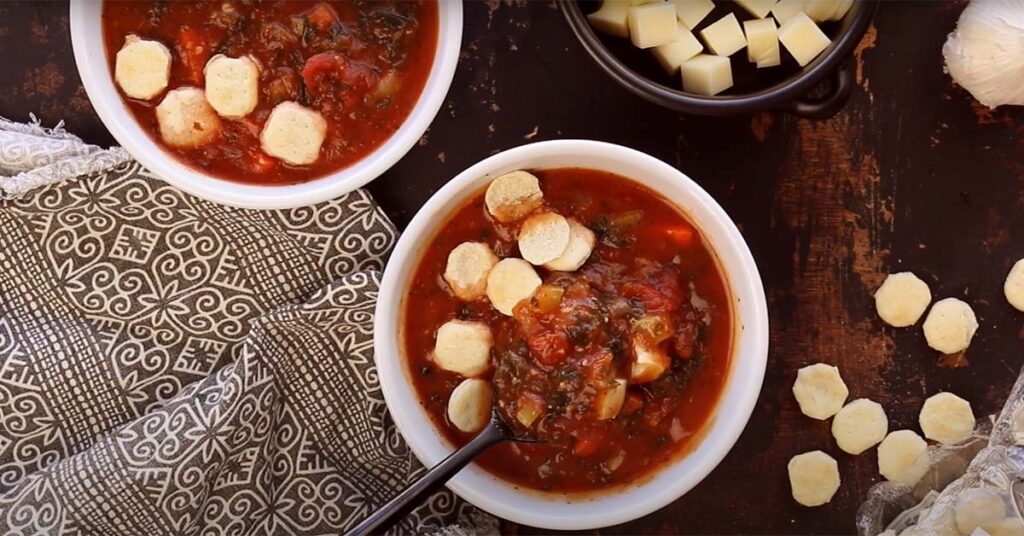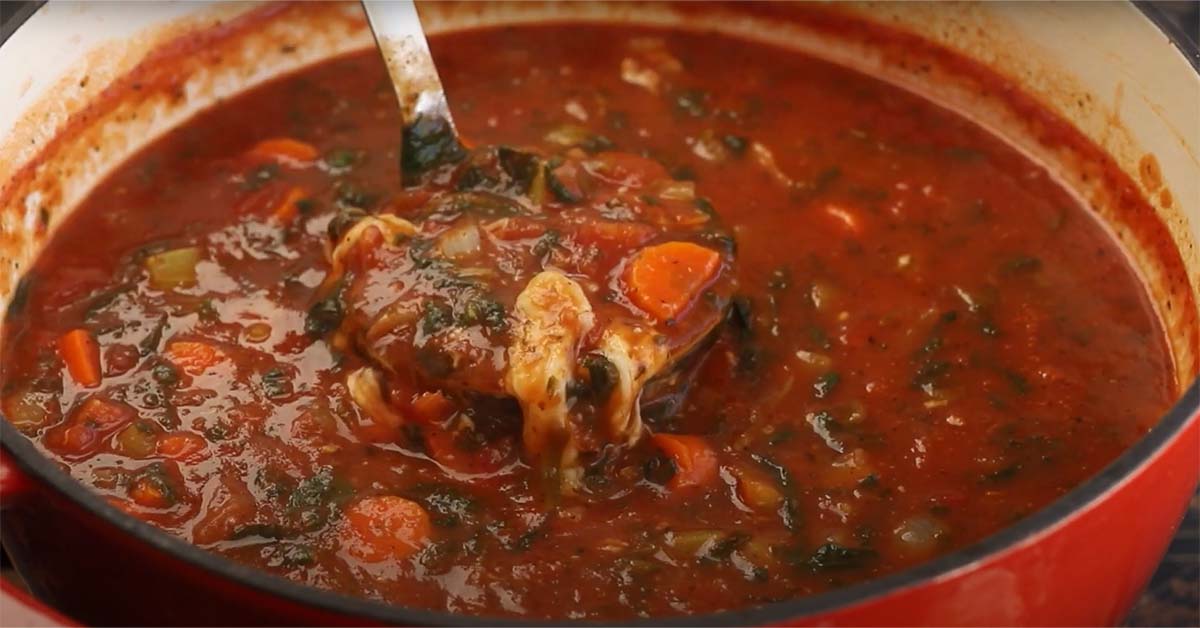In this comprehensive guide, we delve into the savory world of swamp soup. This article covers everything from its origins to a step-by-step recipe. We’ll also explore nutritional benefits, tips for perfection, and FAQs. Now, let’s start with the introduction to swamp soup.
Introduction to Swamp Soup
Swamp soup is a hearty, comforting dish that has found its way into the hearts of many. Originating from the Southern United States, this soup is known for its rich flavors and versatile ingredients. It’s a perfect blend of greens, beans, and meats, offering a unique taste that stands out from other soups.
What is Swamp Soup?
At its core, swamp soup is a flavorful concoction. It combines leafy greens, such as turnip greens or collards, with beans and smoked sausage. The result is a soup that’s both nutritious and filling. It’s a testament to Southern culinary creativity, turning simple ingredients into a delicious meal.
The Origin and Popularity
The origins of swamp soup are as humble as its ingredients. It started as a way to use up leftover vegetables and meats. However, it quickly became a beloved staple. Today, it’s celebrated for its comforting qualities and ease of preparation. Its popularity has spread beyond the South, finding fans across the country.
In the next section, we’ll dive into the ingredients and variations of swamp soup. This will include tips on customizing the recipe to suit your taste. Stay tuned for a journey through flavors that define this Southern classic.
Ingredients and Variations
Swamp soup, a comforting and hearty dish, is beloved for its versatility. Here, we delve into the essential ingredients and the myriad of variations you can explore.
Basic Ingredients for Swamp Soup
The foundation of swamp soup includes:
- Chicken broth or vegetable broth for a vegan option
- White beans, such as Great Northern or navy beans
- Greens, traditionally turnip greens, but kale or collard greens work too
- Smoked sausage, with andouille being a popular choice for its spicy kick
- Onion and garlic for the base flavor
- Spices, including salt, pepper, and a dash of cayenne for heat

Variations and Substitutes
Flexibility is key with swamp soup. Here are some ways to customize:
- Meat Variations: While andouille sausage adds a spicy depth, kielbasa or even chicken are excellent substitutes. For a vegetarian twist, omit the meat or use a plant-based sausage.
- Vegetable Add-ins: Enhance the soup with additional vegetables like carrots, potatoes, or tomatoes. Each brings its own flavor and texture.
- Vegan Options: A vegan version is easily achievable. Use vegetable broth and skip the meat. Add more beans or tofu for protein.
For those interested in the health benefits of turnip greens, Healthline offers comprehensive insights. This not only enriches the soup’s nutritional profile but also aligns with various dietary preferences.
In addition, understanding the best practices for storing and reheating soups ensures your swamp soup remains delicious and safe to consume over time. This knowledge is crucial, especially when enjoying the soup across multiple meals.
By embracing these variations, you can tailor swamp soup to suit any palate or dietary need, making it a versatile dish for any occasion.
Step-by-Step Recipe
Creating swamp soup is a journey of flavors. Here’s how to bring this comforting dish to life, step by step.
Preparing Your Ingredients
First, gather all your ingredients. Chop the onion and garlic finely. Slice the sausage into bite-sized pieces. Rinse the greens well to remove any grit.
Cooking Process
- Initial Preparation: In a large pot, sauté the onion and garlic until translucent. This builds the flavor base.
- Cooking Meat and Vegetables: Add the sliced sausage to the pot. Cook until it’s slightly browned. This step infuses the soup with a smoky flavor.
- Adding Liquids and Greens: Pour in the chicken or vegetable broth. Add the white beans and greens. The soup should simmer until the greens are tender. This melds the flavors together beautifully.
- Final Touches: Season with salt, pepper, and a pinch of cayenne. Adjust according to taste. Let the soup simmer for an additional 10 minutes. This allows the flavors to deepen.
Serving Suggestions
Serve the swamp soup hot. It pairs wonderfully with crusty bread or cornbread. For a refreshing contrast, consider a side salad.
Incorporating vegan soup base options can transform this dish into a vegan delight. It’s a simple swap that maintains the soup’s hearty essence.
This step-by-step guide ensures a delicious result. Remember, the beauty of swamp soup lies in its simplicity and the joy of sharing it with others.
Nutritional Information
Swamp soup is not just a treat for the taste buds but also a boon for health. Let’s explore its nutritional benefits.
Health Benefits
- Rich in Fiber: Thanks to the white beans and greens, this soup is a fiber powerhouse. Fiber aids digestion and keeps you feeling full longer.
- Packed with Vitamins: Greens like turnip or kale are loaded with vitamins A, C, and K. These boost immunity and support bone health.
- Low in Calories: By choosing lean meats or vegetarian options, swamp soup can be a low-calorie meal. It’s hearty yet healthy.
Caloric Content
A serving of swamp soup typically contains between 200 to 300 calories. This varies with the choice of ingredients. For a lighter version, increase the greens and reduce the sausage.
Understanding the nutritional profile of swamp soup helps in making informed dietary choices. It’s a delicious way to nourish your body and satisfy your hunger.
Tips and Tricks for the Perfect Swamp Soup
Achieving the perfect swamp soup is about more than just following a recipe. Here are some insider tips and tricks.
Enhancing Flavor
- Use Homemade Broth: For a richer taste, homemade chicken or vegetable broth is unbeatable. It adds depth that store-bought versions can’t match.
- Brown the Sausage Well: Sautéing the sausage until it’s well-browned creates a base of flavor that infuses the entire soup.
- Add a Splash of Vinegar: A teaspoon of apple cider or white vinegar added at the end brightens the soup’s flavors.
Storage and Reheating Tips
- Cool Quickly: To store, let the soup cool quickly and transfer it to the refrigerator. This preserves freshness.
- Reheat Gently: Warm the soup over low heat to maintain its texture and flavors. Avoid boiling.
- Freeze in Portions: Freeze the soup in individual servings for easy thawing. It’s perfect for quick meals.
For those keen on exploring further, understanding the best practices for storing and reheating soups is crucial. It ensures your swamp soup remains delicious and safe over time.
By following these tips, you’ll elevate your swamp soup from good to great. It’s all about the love and care you put into the preparation.
FAQs
Swamp soup, with its rich flavors and versatile ingredients, often brings up questions. Here are answers to some frequently asked ones.
- Can I freeze Swamp Soup? Yes, you can. Ensure it cools down before freezing. Store in airtight containers. It keeps well for up to 3 months. Thaw overnight in the refrigerator before reheating.
- How can I make a vegan version of Swamp Soup? Substitute the chicken broth with vegetable broth. Omit the sausage or use a plant-based alternative. Add more beans or tofu for protein. This keeps the soup hearty and flavorful.
- What are the best sides to serve with Swamp Soup? Swamp soup pairs well with crusty bread or cornbread. A side salad adds freshness. For a fuller meal, consider serving with rice or quinoa.

